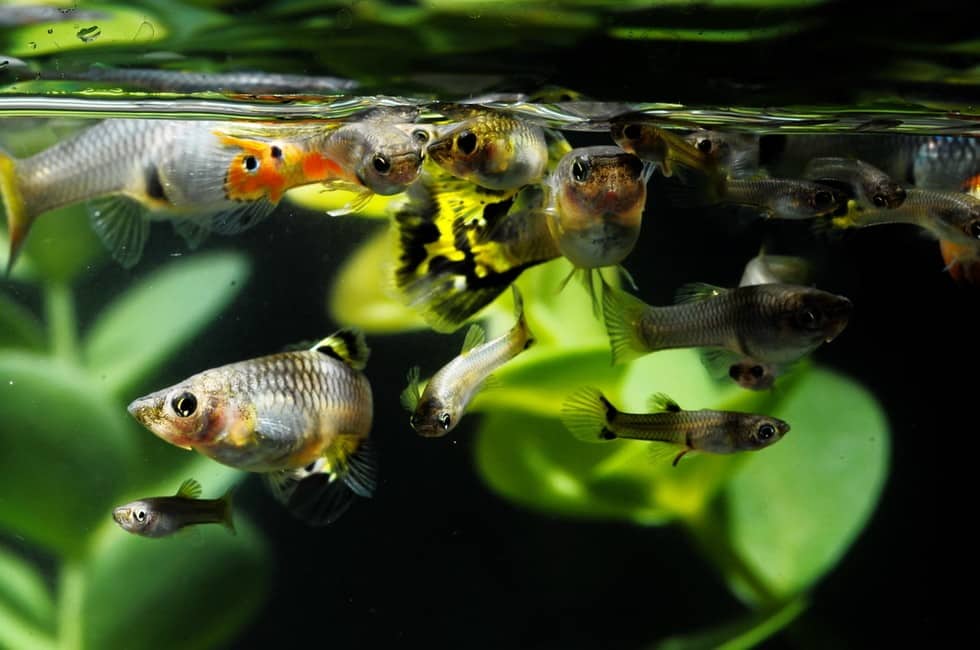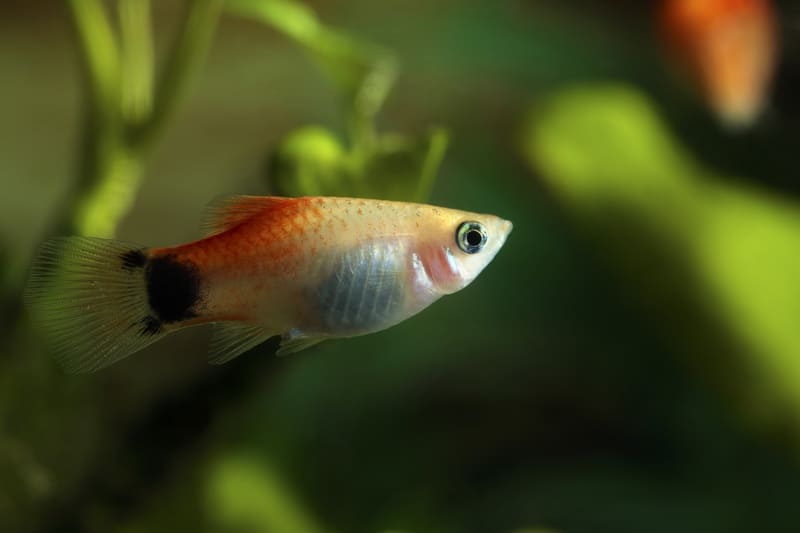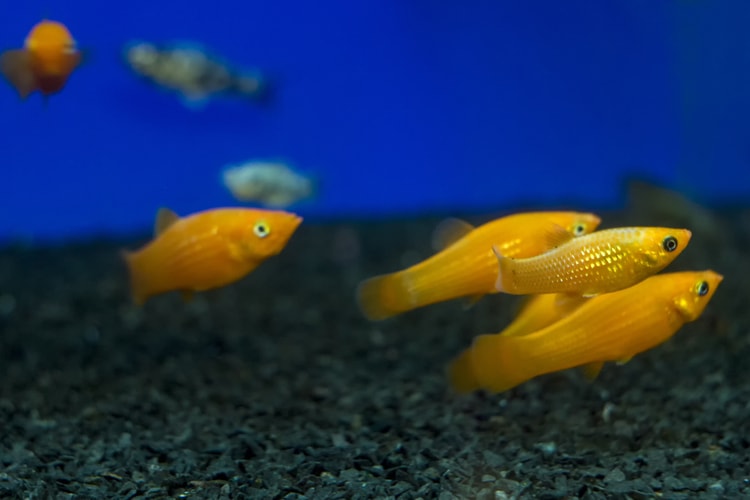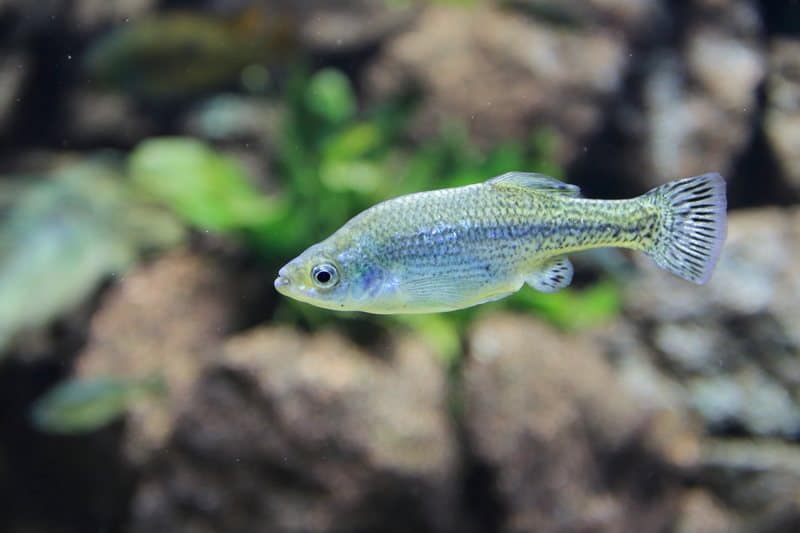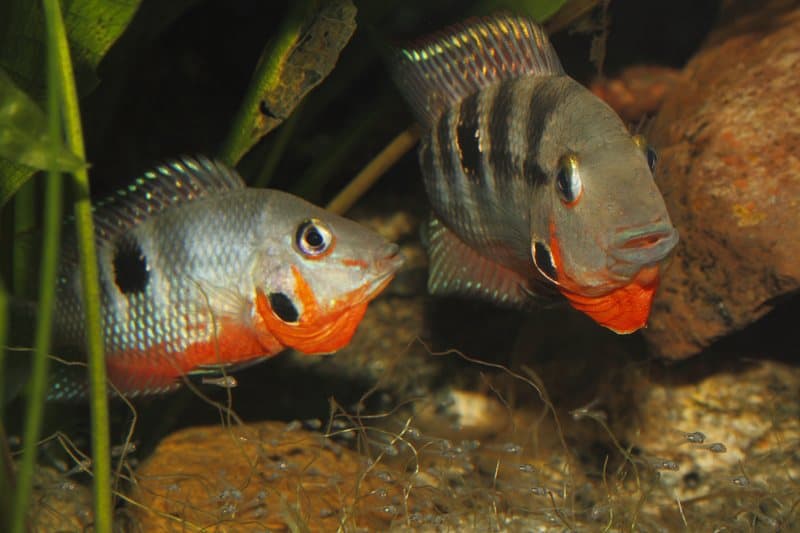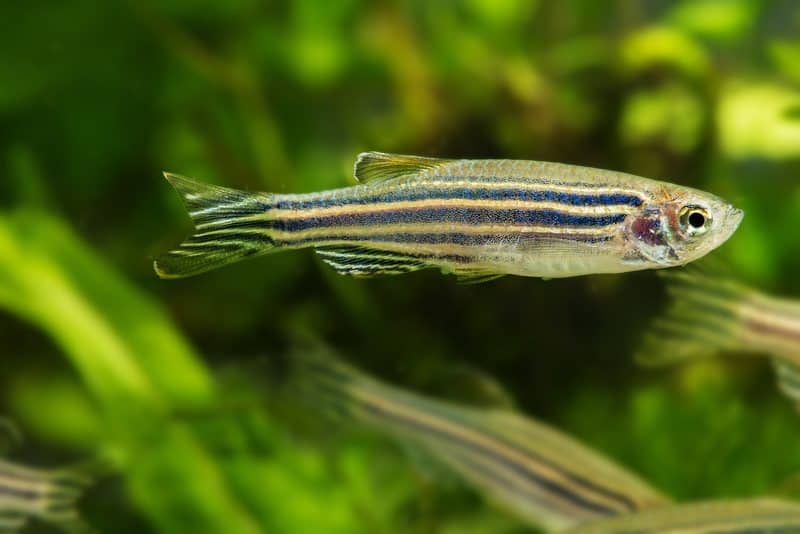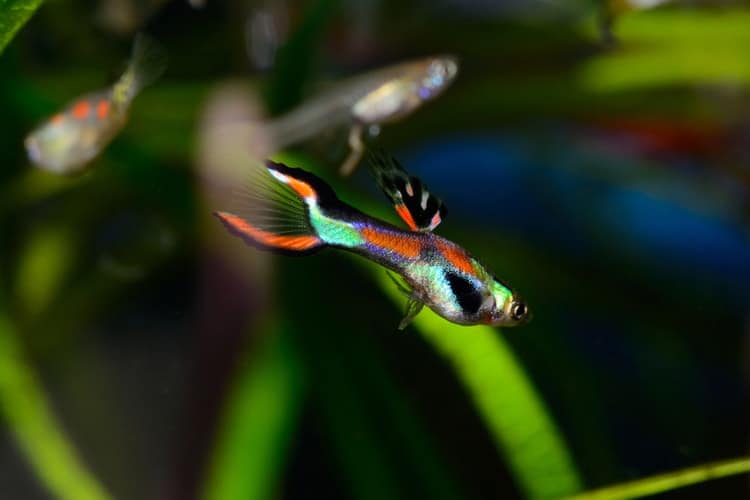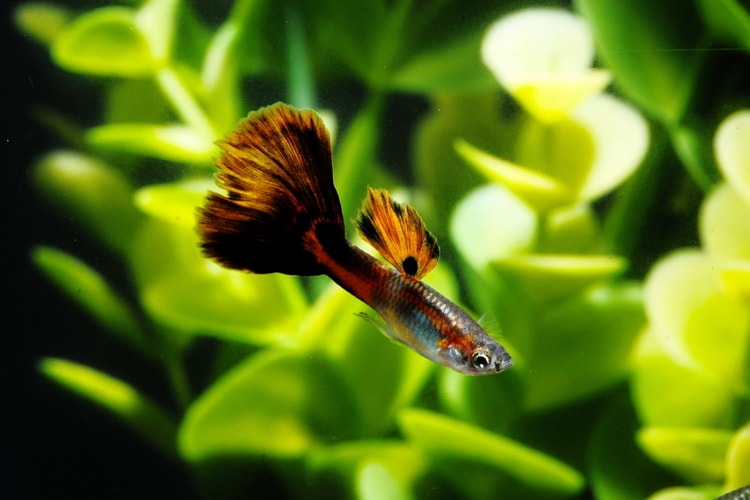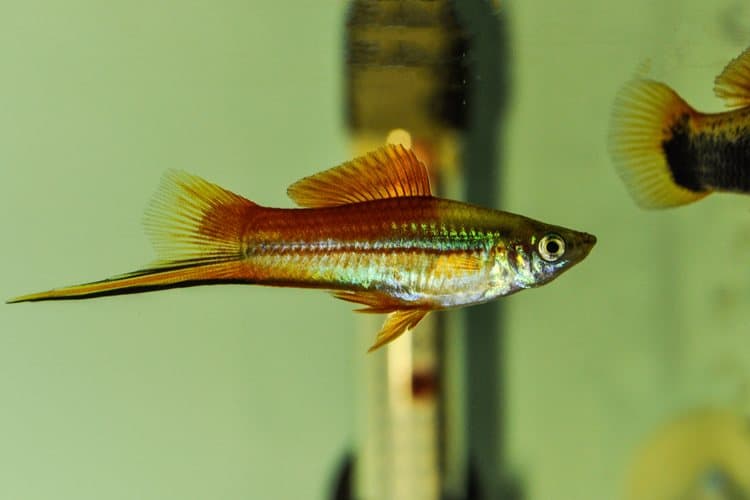Seeing a fish and taking it home without any preparation is the best way to be sure that your fish won’t survive.
It’s imperative that you buy just one or two fish initially, based on how big they will grow, and how bank your tank is, before subsequently adding more fish. This will aid in the development of the nitrogen cycle.
After a few weeks, you can then add another fish and let the aquarium settle before adding any more.
Never add more than just a few fish at a time, to ensure the proper establishment of a stable nitrogen cycle.
As a rule of thumb, you can keep 1 inch of fish for each gallon of water in your tank, assuming it is suitably filtered and aerated. Remember to take this into account.
Your fish tank needs to have been set up for at least 24 hours (longer for saltwater) and needs to be properly prepared for the type of fish you would like to purchase.
Good starter kits can be found at your local pet supply shop. These kits are often less expensive than buying the individual components.
You can buy this Fish Breeding Box on Amazon and give it a try!
As a minimum, you’ll need the following equipment before buying your fish:
- Tank
- Hood & Light
- Heater
- Filter
- Gravel
- Fish Food
- Decorations & Plants
- Net
Compatibility of Aquarium Fish
To guarantee the health and wellbeing of your tropical freshwater fish, it’s essential that you select species which will get on with each other. Many varieties like the African Cichlid are known for their aggression, and will not get along with some other kinds of fish.
Easiest Fish to Breed
If you are wondering what aquarium fish are the easiest to breed, then look no further. There are plenty of egg-laying and live-bearing fish which you can successfully mate and breed at home.
Keeping a fish aquarium is a satisfying endeavor in itself. It’s so enjoyable to see your very own little thriving aquatic habitat.
It’s not that difficult to breed fish, as long as you give your fish a fantastic home and proper care.
Within this informative article, we’ll cover a few of the easiest fish to breed as well as some hints on looking after fry.
1. Guppies
Guppies are known to be super easy to breed, which makes them an exceptional selection for first-time aquarists.
With guppies, it’s generally easy to tell males from females. Male guppies are somewhat more vibrant, displaying stripes. Ladies are a gray color and lack the markings.
Guppies will frequently breed without needing much—if any—human intervention. What’s more, a female guppy can store a male’s sperm for weeks after mating.
The female can use this process to produce many batches of fertilized eggs, even months after contact with the male. You can simply put a group of guppies in a tank and see which ones mate with one another.
Conversely, you can separate your preferred breeding group into their own tank. The latter is recommended if you’re attempting to encourage specific genetic characteristics.
After the cute guppy fry arrive, then they will require a few places to hide out until they grow large enough to defend themselves from possible aggressors (which could include Mom and Dad guppy). Give them their own tank, if possible.
2. Platies
Another livebearer, platies are nearly as easy to breed as guppies. But guppies rarely eat their young, whereas platies will actively hunt theirs. As a result of this, unless their aquarium has lots of hiding places and floating plants, newborn survival rates tend to be low.
But if a female is put in a breeding tank and removed immediately after giving birth, then these fish reproduce like rabbits, or more correctly—guppies.
3. Mollies
Mollies are successful breeders, though they do need a little bit more care compared to fish such as platies and guppies.
Mollies can grow to anywhere from three or four inches to six inches or longer, and they can display a huge array of shades and markings.
This is due mostly to the fact that there are at least a few species (and hybrids thereof) commonly lumped under the “molly” title.
Should you purchase juvenile mollies, make sure you ask how large they’ll get, so you’re able to find a big enough tank.
Male mollies will breed quickly, and you ought to have a minimum of three females to each male so that any one female is not bred to fatigue (or worse).
4. Ameca Splendens (Butterfly splitfin)
Although these fish were once popular with hobbyists, they have fallen out of favor in the past few decades and can be difficult to find. The fact that they do not succeed in community tanks and are persistent fin nippers also hasn’t helped their popularity.
However, they are simple to breed, with an intriguing technique of reproduction. Ameca Splendens is a part of the Goodeinae family and while technically a livebearer, their reproductive process is more similar to humans than it is to other livebearing fish.
The fry is nourished by the mother via a trophotaenia that can frequently be seen attached to the young fish after the mom gives birth to fry nearly half her size. They show an incredible amount of care for a fish, even zealously protecting their eggs and fry.
The downside to their dedicated parenting is that they will attack any additional fish in their aquarium, no matter what size they are, to drive them away.
However, if they’re kept in their own breeding tank, the whole breeding process is interesting to see, and something most aquarists should undergo at least once.
As soon as they begin breeding, it is practically impossible to get them to stop. An aquarium can quickly get overrun.
5. Firemouth cichlids
Firemouth cichlids are named for the swath of red that travels through their jawline and down the length of their bodies. They can reach lengths of 6 inches and can live for many years if well looked after.
Since they’re so big, be certain that you have a large tank for any breeding group (minimum of 50 gallons).
For optimum breeding requirements, be sure to keep their water clean and always use an excellent quality filter that is adequate for your tank size. Clean and change the water regularly.
Firemouths generally mate quite readily, so long as the correct water parameters are maintained.
You can buy a mating pair, or you can just put a set of juveniles together (aim for 6-8 fish). As they become older, they will most likely couple up.
All these cichlids need a level and fairly smooth surface to lay their eggs on. A female firemouth will place her eggs on a decorative object or a suitably-shaped stone.
It is not uncommon for firemouth cichlids to lay their eggs on the side of the aquarium. After fertilizing the eggs, the male will offer security as the female watches over their young ones.
Once hatched, the fry will stay close to their parents until they are several weeks old — these fish display excellent care.
6. Zebra Danios
Among the quickest and easiest fish to breed in an aquarium, these would be the best fish for anybody who wants to dip their toe into the breeding process.
While the fish will spawn continuously, an aquarist is very unlikely to see any danio fry in a community aquarium. This is because the adult fish will consume every egg or any fry that is fortunate enough to hatch within the aquarium.
For zebra danio fry to survive, these fish ought to be bred in a dedicated breeding tank. Marbles should line the base of the tank to allow the eggs to fall out of reach of the hungry adults. The adults must be immediately removed from the aquarium so that the eggs and fry will be safe.
7. Rosy Red Minnows
A criminally underrated fish, rosy red minnows are usually only found in feeder fish tanks and bait buckets. But if you can see past their humble origins, these fish are one of the easiest to breed and they are also one of the few freshwater fish outside of cichlids to show care.
After mating, a single male rosy red minnow may claim a cave for its own, and then shield it from all comers. Females will be enticed into the cave, until the cave is full of eggs.
The male will vigorously protect the eggs until they hatch. Since the adults rarely prey on their fry, these fish have high survival rates in a species-specific aquarium.
8. Anableps
When you’ve learned of anableps, you’ve likely heard them called by their common title, Four-Eyed fish. This unusual fish is known mostly for its eyes.
While there are only two of these, each eye is oversize and divided into two segments. This enables it to thoroughly survey the area, and also observe above and beneath the water.
Anableps are quite large. They can grow to be a foot long. This, of course, means that if you wish to breed them, you’ll need a good-sized tank.
Here is the tricky part of breeding anableps—they’ve yet another distinguishing feature; they are one-sided breeders.
This usually means that the sex organs of both males and females are situated to one side of their body.
Due to this, a right-sided male can only mate with a left-sided lady, and vice-versa (though a couple of breeders have discovered some exceptions to this rule). Make sure that you own a selection of lefties and righties.
Also note that male anableps may get aggressive with one another if they feel threatened. For this reason, you should ensure that your aquarium is a good size, and that you’ve got more females than males.
When female anableps are ready to give birth, they will be uncharacteristically aggressive and search out a hiding spot. Once born, the fry should be hardy and ready to eat food.
Easiest to Breed for More Profit
If your reason for having an aquarium is just to make money out of it, here are the types of fish that are easier to breed for profit.
Endlers Livebearer
The Endler’s Livebearer is believed to be merely a color variant of the common Lebistes reticulatus (Poecilia reticulate). However, it’s debatable whether this is true or not. However, they are certainly an appealing livebearer.
The males of the species might be a fluorescent color, whereas the females are more likely to be silver or grey. It’s often thought to be a dwarf version of the Lebistes reticulatus because this fish only grows up to 1″-1.5″ whereas the Lebistes reticulatus gets up to 2″.
Because this fish is so similar to Lebistes reticulatus, it’s hard to find anything unique to say about it.
The male Endler makes the female pregnant, and the embryos will be fully developed in 20-40 days. If they’re given enough enriched food such as wafers, then the fry will grow to adulthood quickly.
The best food for brand new fry is live infant branchiopod because it’s small enough for them to consume easily.
They prefer a tank with a neutral pH and a moderately soft H20. The tank ought to be decorated with either live or fake plants, and the water should be between 75-85°F (24-29°C).
To produce interesting colors, ensure you have two females for each male, and feed them a variety of foods, including dried and frozen.
If they are given the right food, and kept in the right conditions, they will thrive and produce plenty of fry.
The Endler can be a great fish to breed as long as it’s in a tank with other peaceful fish.
Guppy’s, fancy Guppy’s
A great tropical fish for newbies, the guppy is a rather rugged tropical fish. The male and female are not hard to tell apart as the male tends to have wide, long, brightly colored caudal fins (tails). The female is generally bigger, thicker bodied, with much less color and a smaller caudal fin (tail).
They are livebearers so the infants will freely swim at birth. During each cycle, the female will produce up to sixty young.
If left in a well-populated community tank, the Lebistes reticulatus fry is rapidly eaten if not kept safe in a breeding net or breeder’s box.
Please think about what you are going to do with all the fry. If you are not intending to breed them, you should keep just males or just females.
Combine the sexes, and you will definitely have infants. If it’s a problem for you to see the bigger fish inside the tank feasting on the baby guppies, then only keep all males or all females. You will notice some aggression among males, but nothing too major.
You should also be aware that female guppies could be pregnant when you get them out of the aquarium.
Make sure you provide them with a variety of foods for coloration and optimal health. Feeding them with frozen or live foods once in a while will do wonders for their activity levels and general well-being.
Mollies, Molly Fish
This fish loves a touch of salt in their water, so make sure you add a teaspoon of rock salt per five gallons of warm water. This is a tropical fish that comes in different colors like orange and black.
They are a livebearing tropical fish which should be pretty straightforward to breed. For aquarists, the biggest problem isn’t with getting them to breed, but with stopping them from breeding! If left with adult fish a tank, the baby mollies may get eaten.
Mollies can consume flakes, frozen, freeze-dried, and live foods.
Platy, Platies
Initially found in Central America, this fish is very easy for beginners to take care of. The color varieties include the poeciliid fish and the wagtail as well as the salt and pepper platies. There’s even a range referred to as the Paddy Mouse. They’ll be active if kept in sensible water conditions.
The female poeciliid fish can be bigger than the males. Females will achieve a size of up to 2.5 inches whereas the males grow to an average of 1.5 inches. Since they’re livebearers, breeding them is simple.
Platies are happy with most fish foods and will consume frozen, live and freeze dried foods. Try to mix their diet up a bit to achieve optimal health and coloration.
Swordtail Fish
The helleri comes in several different colors with the males being recognized by their own signature “sword” tail. This is a fish which can adapt to several water conditions.
Some hobbyists have reported problems with aggression among male swordtails. Therefore you should limit the number of males you are keeping. You should also ensure that you have at least three females for every male.
They will eat most fish foods including frozen, freeze-dried, and live foods such as branchiopod.

